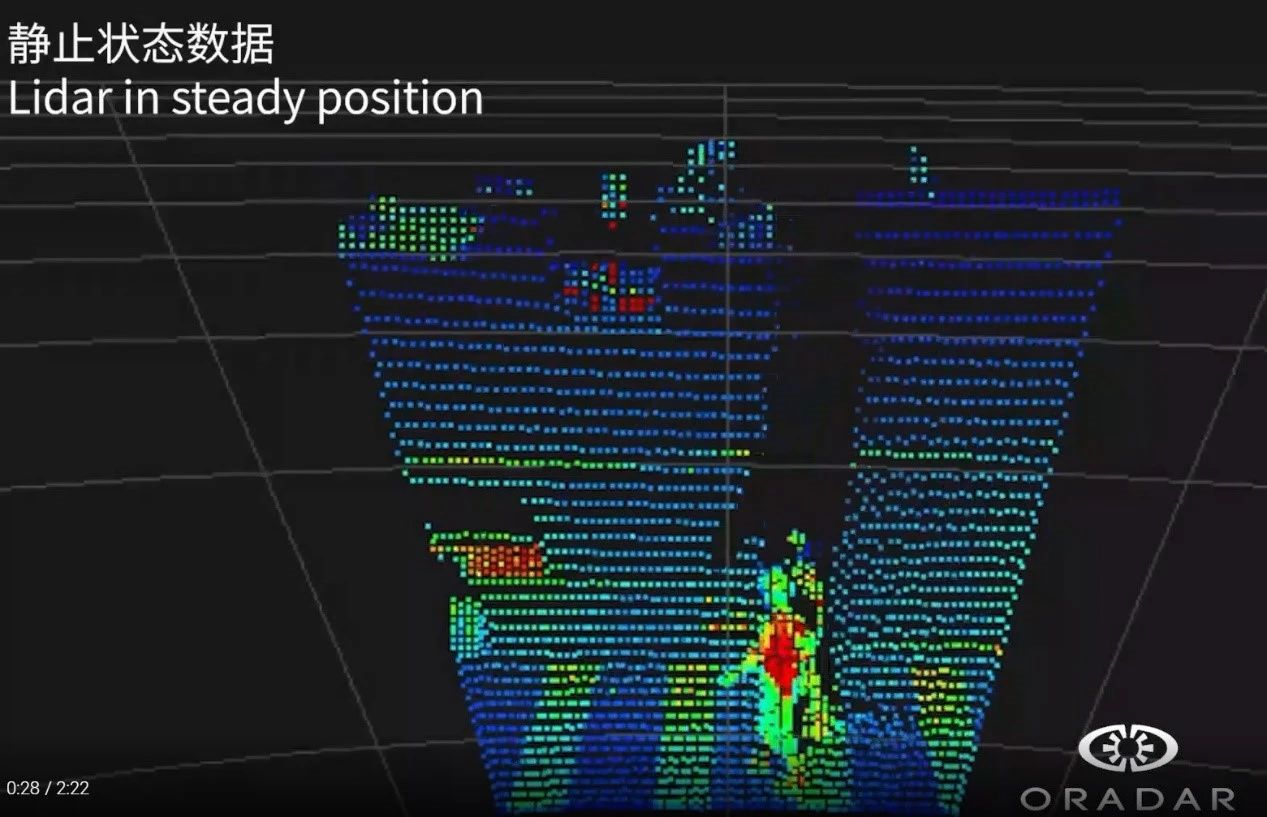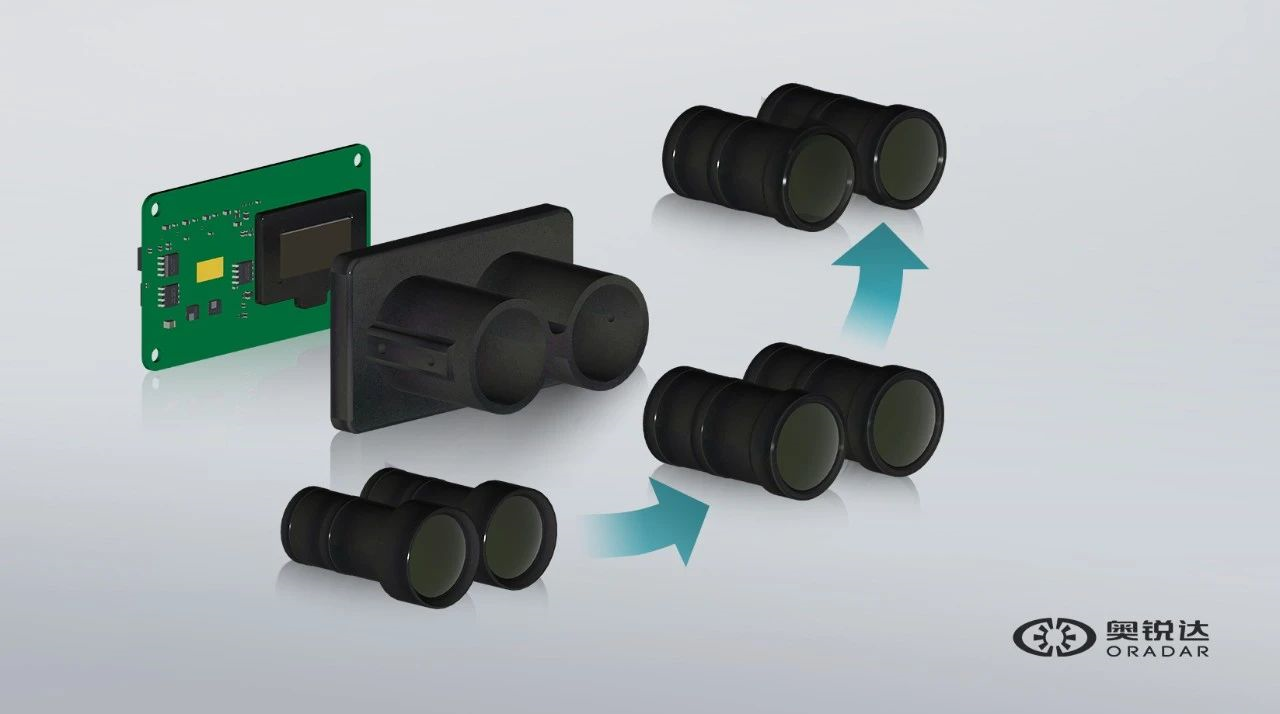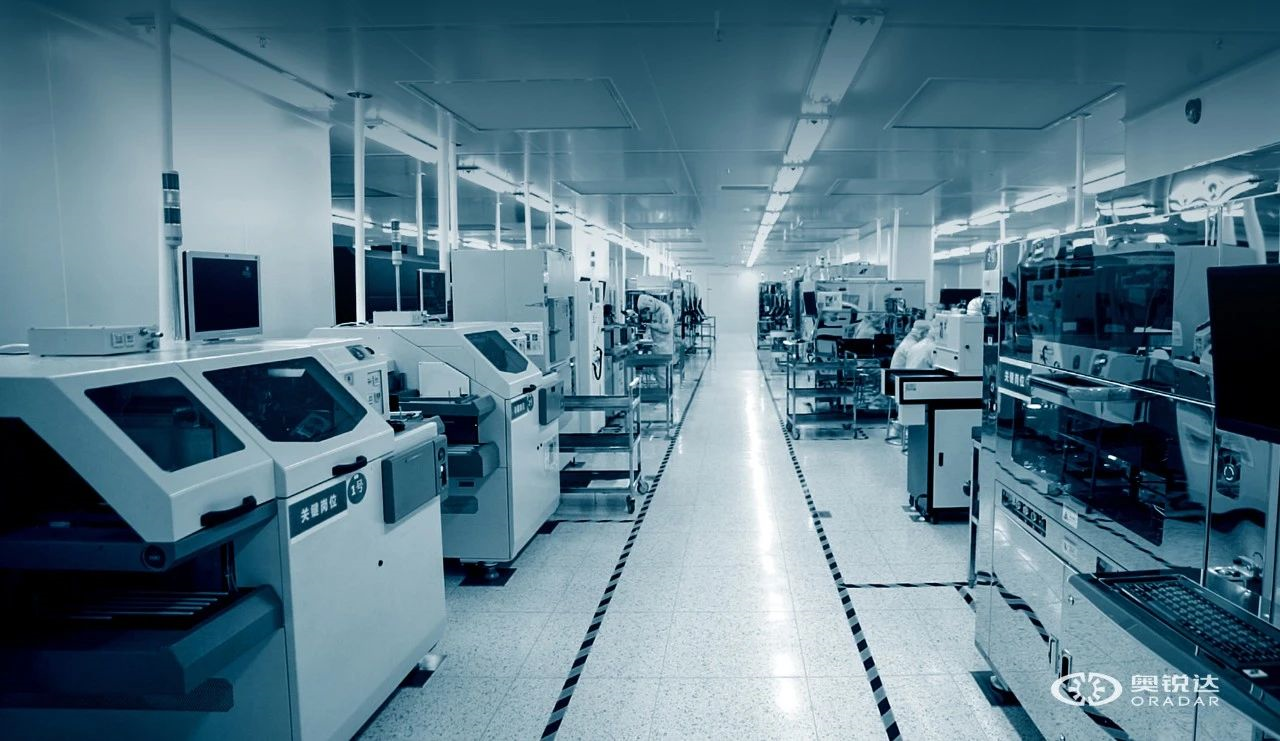Oradar launched the SPAD array technology solution to create a new all-solid-state lidar 2021-06-17o
Recently, Shenzhen Oradar Technology Co., Ltd. (hereinafter referred to as "Oradar") officially released the SPAD array solid-state lidar technology solution (hereinafter referred to as "the solution"). The solution innovatively integrates VCSEL and SPAD technology architecture, achieves significant breakthroughs in resolution and detection distance, and has outstanding performance in engineering characteristics such as power consumption and volume.
It is worth noting that the measured Demo video of Ordarray, an all-solid-state lidar prototype, also made its debut on Oradar's official website (click "Read the original text" at the end of this article to visit the official website). The video shows the process of Ordarray reconstructing the real-time point cloud map of road conditions within 100 meters in real time.
Demo video of Ordarray, Oradar all-solid-state lidar sample
VCSEL+SPAD technology realizes long-distance single-photon detection
In the field of all-solid-state lidar, the current mainstream technology routes include OPA optical phased array technology and Flash technology. Among them, OPA optical phased array technology has high technical difficulty and high cost; the Flash technology has energy dispersion and limited detection distance due to its physical characteristics of the emitting area array light source. Oradar lidar uses innovative VCSEL+SPAD technology solutions. Among them, multi-section addressable VCSEL is a lattice multi-beam light source that emits VCSEL lasers by using the controllable multi-beam scanning technology; moreover, the detector can open the area corresponding to the emission and receive the reflected light from the target; finally, the lidar point cloud is obtained in the entire FOV through electronic scanning.

Controllable multi-beam scanning technology of VCSEL+SPAD
This controllable multi-beam scanning light source is called an addressable VCSEL. Compared with the Flash solution, the addressable VCSEL laser has significantly improved the peak power density of the emitted light and the signal-to-noise ratio. This also means that under the same power, Oradar lidar solution can achieve a longer detection distance. In addition, this scanning method facilitates chipization and miniaturization, minimizes the complexity of peripheral circuits, and realizes all-solid-state scanning. At the receiving end, Oradar's solution uses a SPAD array sensor, which enables the lidar to have single-photon detection capability and greatly improves the detection sensitivity. In the actual detection process, Oradar's lidar detection system can use the addressable VCSEL light source to emit hundreds or thousands of light pulses in a sub-millisecond/millisecond time period. The laser pulse signal reflected from the target is received by the SPAD pixel in the corresponding area, which triggers an avalanche event in the pixel with a certain probability to complete the photon counting. Finally, the system forms a histogram that can reconstruct the received pulse signal waveform through sorting and accumulation, so as to realize the ranging of the target.

Sensors on an intelligent vehicle
TCSPC dynamic adjustment, reasonable allocation of system capabilities
From a technical point of view, the more times the pulsed optical signal is transmitted and received, the more accurate the system will reconstruct the waveform, and the stronger the ranging ability will be. However, too many accumulations will also lead to a decrease in the system frame rate.
For this reason, Oradar lidar solution can set the ranging performance of different detection areas by adjusting the time-correlated single photon counting (TCSPC). In the actual driving process, intelligent vehicles have different ranging requirements for different perspectives and different environments. In areas where more depth information is needed, Ordarray can add more pulsed light signals; in edge areas, Ordarray can reasonably reduce the frequency of signal transmission and reception, so that the system capacity can be reasonably allocated through dynamic adjustment. At present, Oradar has verified a full set of technical links. The mass-produced VCSEL lasers, SPAD array sensors and chips based on the industry's advanced standard CMOS semiconductor process, Oradar SPAD array lidar technology have overcome various technical difficulties in laser emission, reception, and signal processing with high frame rate under the condition of small volume and power consumption.

Point cloud generated by Ordarray in stationary and driving states
It is worth mentioning that, based on the special imaging mode of SPAD array radar, Ordarray can work together with other high-precision sensors such as lidar and high-definition cameras, which greatly reduces the difficulty of data calibration and fusion between rotary and hybrid solid-state lidars and other heterogeneous sensors, enabling the intelligent vehicle processing center to complete the data pre-fusion of multiple types of sensors. With the support of multiple sensors, Ordarray can comprehensively improve the detection capability of intelligent vehicles for pedestrians, obstacles and small objects, which improves the safety redundancy and fault tolerance of automatic driving.
All-solid-state modular design, smaller, more flexible, and easier to load
At present, Oradar has successfully realized the integrated design of large-scale solid-state area array lidar. Ordarray is designed in an all-solid-state structure, without any mechanical rotating parts inside the body, which directly reduces the volume and failure rate of in-vehicle lidars, and improves the reliability of products. Ordarray also adopts a modular and innovative design, and reconstructs the internal space of the transmitting module, receiving module, information processing module, etc., to meet the detection requirements of different vehicle models for lidar. Oradar has designed a variety of transceiver lenses with fully compatible interfaces. According to different performance requirements, you can accurately obtain point cloud data in different FOV angles and detection ranges just by replacing the optical lens, which greatly reduces the manufacturers' adaptation costs.
Ordarray cameras can be disassembled and replaced to meet different needs
To solve the mass production problem of solid-state lidar, Oradar independently developed the automatic machine vision assembly and commissioning solution based on years of its experience in mass production of 3D vision products, which reduces the tedious manual calibration and other procedures, easily realizes the assembly and commissioning of lidar, and significantly improves the mass production of lidars. For solid-state lidar, Oradar will carry out two rounds of iterations on technology and products this year. In the process of R&D promotion, Oradar's vehicle-grade factories and production lines are also put on the agenda. It is expected that by 2022, the vehicle-grade production line compliant with the IATF 16949 standard will be gradually put into production.
Oradar improves mass production through automated assembly and commissioning solutions
Shenzhen Oradar Technology Co., Ltd. is a holding subsidiary of Orbbec Technology Group Co., Ltd. As a leading provider of in-vehicle 3D visual sensor solutions in China, Oradar has been committed to the design of innovative underlying core components and new architecture of lidars and in-vehicle 3D cameras since its establishment in April 2019. The company's products include lidar and vehicle-grade 3D TOF cameras for the mobile robot industry and automotive industry. 





